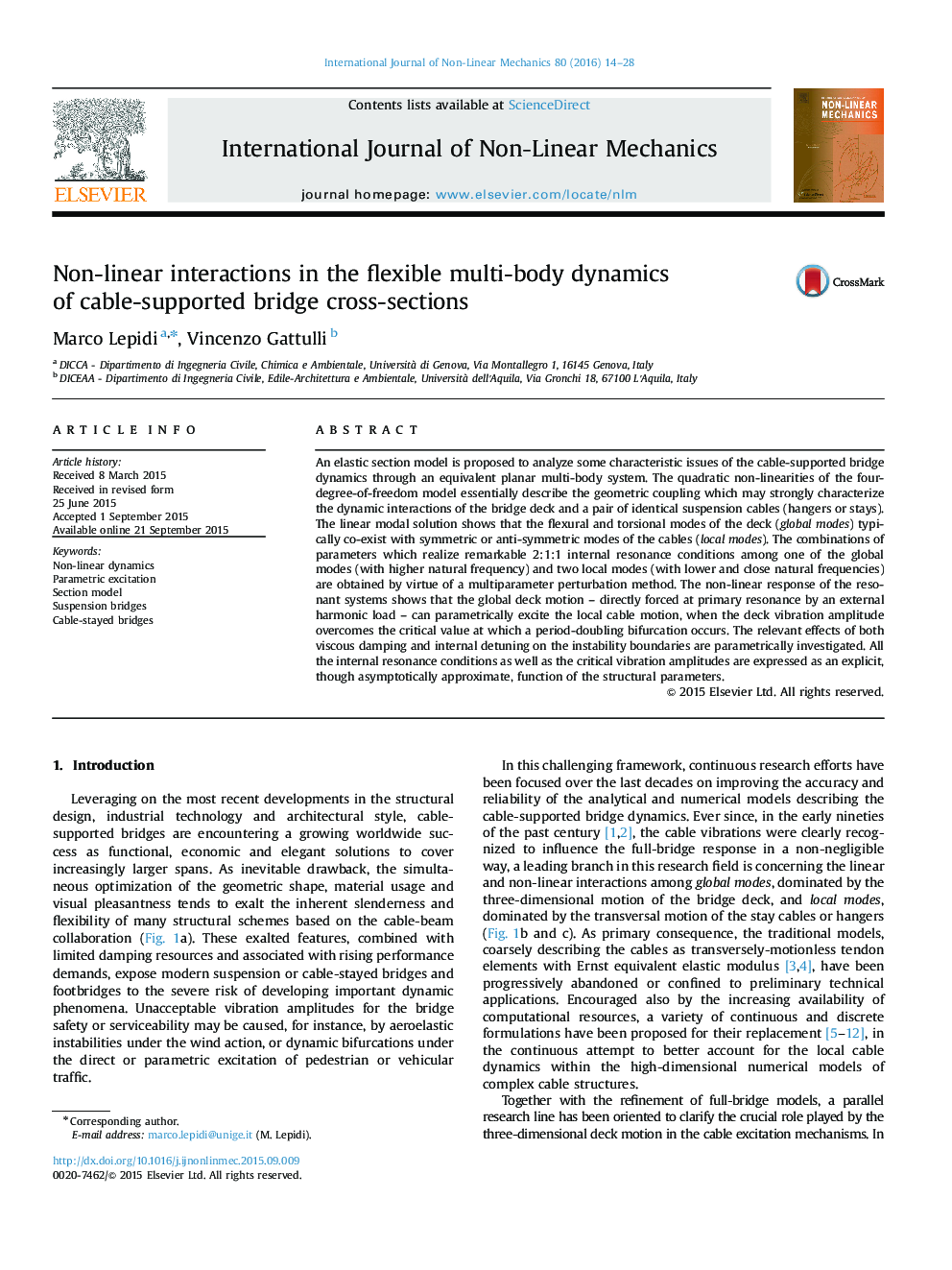| Article ID | Journal | Published Year | Pages | File Type |
|---|---|---|---|---|
| 784901 | International Journal of Non-Linear Mechanics | 2016 | 15 Pages |
•An elastic multi-body section model describes the nonlinear interactions in suspended bridges.•An elastic multi-body section model describes the nonlinear interactions in suspended bridges.•Internal resonance conditions among deck and cable modes are parametrically assessed•The deck motion is found to auto-parametrically excite the transversal cable motion.•Dynamic instabilities let the mechanical energy move from the stiff deck to the flexible cables.
An elastic section model is proposed to analyze some characteristic issues of the cable-supported bridge dynamics through an equivalent planar multi-body system. The quadratic non-linearities of the four-degree-of-freedom model essentially describe the geometric coupling which may strongly characterize the dynamic interactions of the bridge deck and a pair of identical suspension cables (hangers or stays). The linear modal solution shows that the flexural and torsional modes of the deck (global modes) typically co-exist with symmetric or anti-symmetric modes of the cables (local modes). The combinations of parameters which realize remarkable 2:1:1 internal resonance conditions among one of the global modes (with higher natural frequency) and two local modes (with lower and close natural frequencies) are obtained by virtue of a multiparameter perturbation method. The non-linear response of the resonant systems shows that the global deck motion – directly forced at primary resonance by an external harmonic load – can parametrically excite the local cable motion, when the deck vibration amplitude overcomes the critical value at which a period-doubling bifurcation occurs. The relevant effects of both viscous damping and internal detuning on the instability boundaries are parametrically investigated. All the internal resonance conditions as well as the critical vibration amplitudes are expressed as an explicit, though asymptotically approximate, function of the structural parameters.
